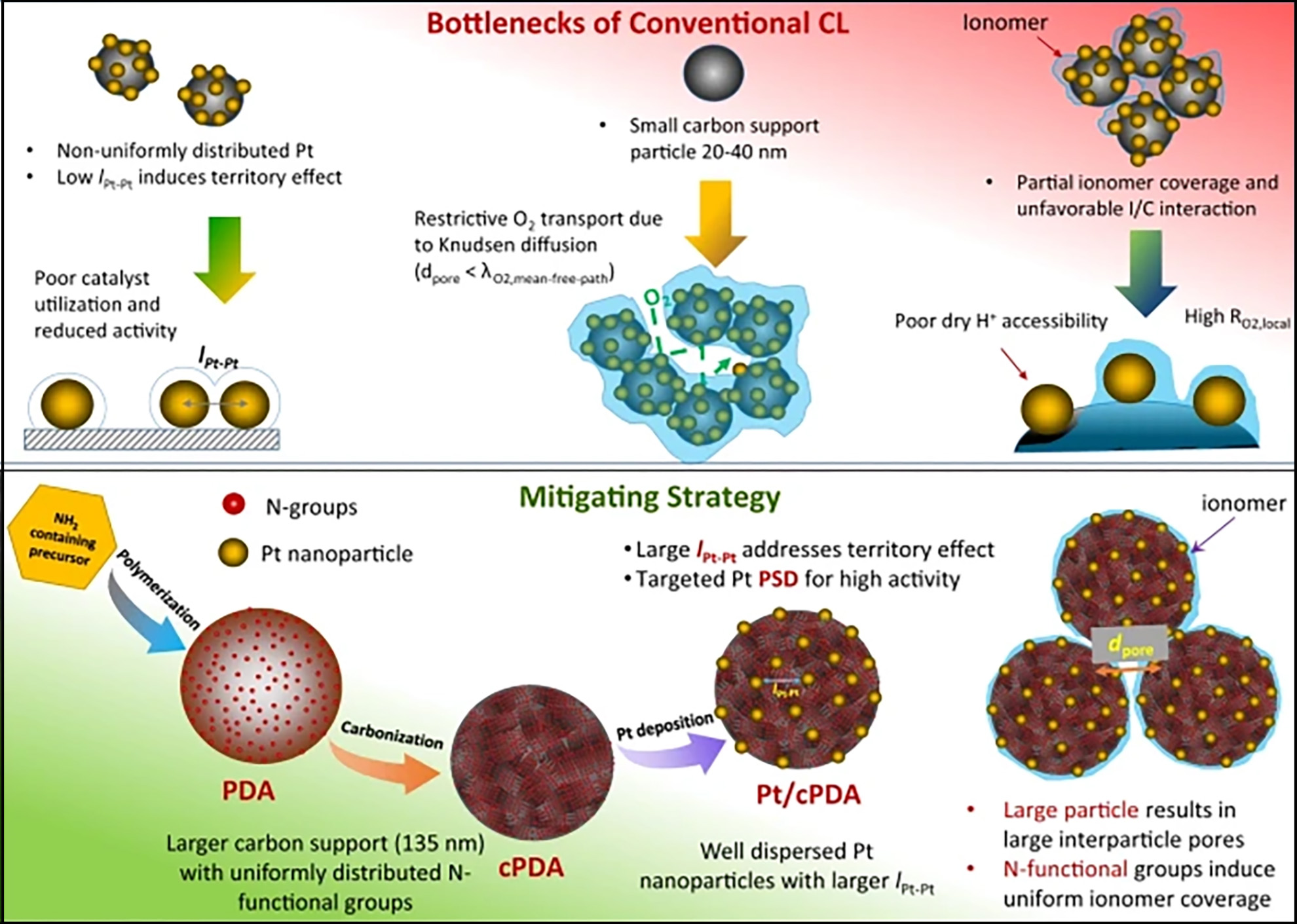MSE Professor Collaborates With Others to Write Accomplished Research Paper

Schematic diagram depicting the bottlenecks of conventional catalyst layer and new catalyst design strategy.
MSE Professor Jasna Jankovic, in collaboration with Muhammad Naoshad Islam, Abdul Bashith Mansoor Basha, Vinayaraj Ozhukil Kollath, Amir Peyman Soleymani, and Kunal Karan published a research paper that made it into the Top 25 Nature Communications chemistry and materials science articles of 2022.
Titled “Designing fuel cell catalyst support for superior catalytic activity and low mass-transport resistance”, the article was published in October 2022 and has over ten thousand accesses as of April 2023.
Professor Jankovic was excited to explain her and her colleagues’ work. “This publication reports on fabrication and testing of a novel catalyst for fuel cells. Fuel cells are clean energy devices that produce electricity from air and hydrogen fuel for a range of applications such as cars, trucks, stationary power, backup power, etc. The electricity is produced by electrochemical oxygen reduction and hydrogen oxidation reactions. Very active catalysts are needed to speed up these slow reactions, especially the oxygen reduction reaction. Our collaborative team designed a very active catalyst based on large carbon spheres, functionalized with nitrogen, with small platinum particles uniformly distributed in and on them. This special, rational design improved the activity and the durability of the catalyst. If this catalyst is used in fuel cells, the devices that they are used to power will perform with higher efficiency and last longer.”
Many different minds came together to work on this. “Our collaborator Professor Kunal Karan from the University of Calgary in Canada contacted us to perform some advanced microscopy on his catalyst and catalyst layers. My postdoc Dr. Amir Peyman Soleymani performed a lot of fancy microscopy to support the research. I also spent hours and hours discussing the results with the team. We all finalized the paper together, which the Calgary team led and we supported.”
Jankovic made sure to mention that she loved working with so many different people. “My research team at UConn has many, many collaborations across the US, Canada, Germany, and South Africa, with people in industry, national labs and academia. Collaborations bring many researchers together at times when they can share knowledge, resources, and successes like this. It also gives students exposure to many different research projects and expands their network. This is our mode of work – and it works! In this particular collaboration, we exchanged samples, reports, ideas and discussions. It was a great collaboration!”
When asked about where this research may go, Jankovic said, “I am hoping that this catalyst will be mass-produced and commercialized with one of our industrial partners.”
Published: May 2, 2023
Categories: faculty, fuel cells, microscopy, news, publications, research
Available Archives